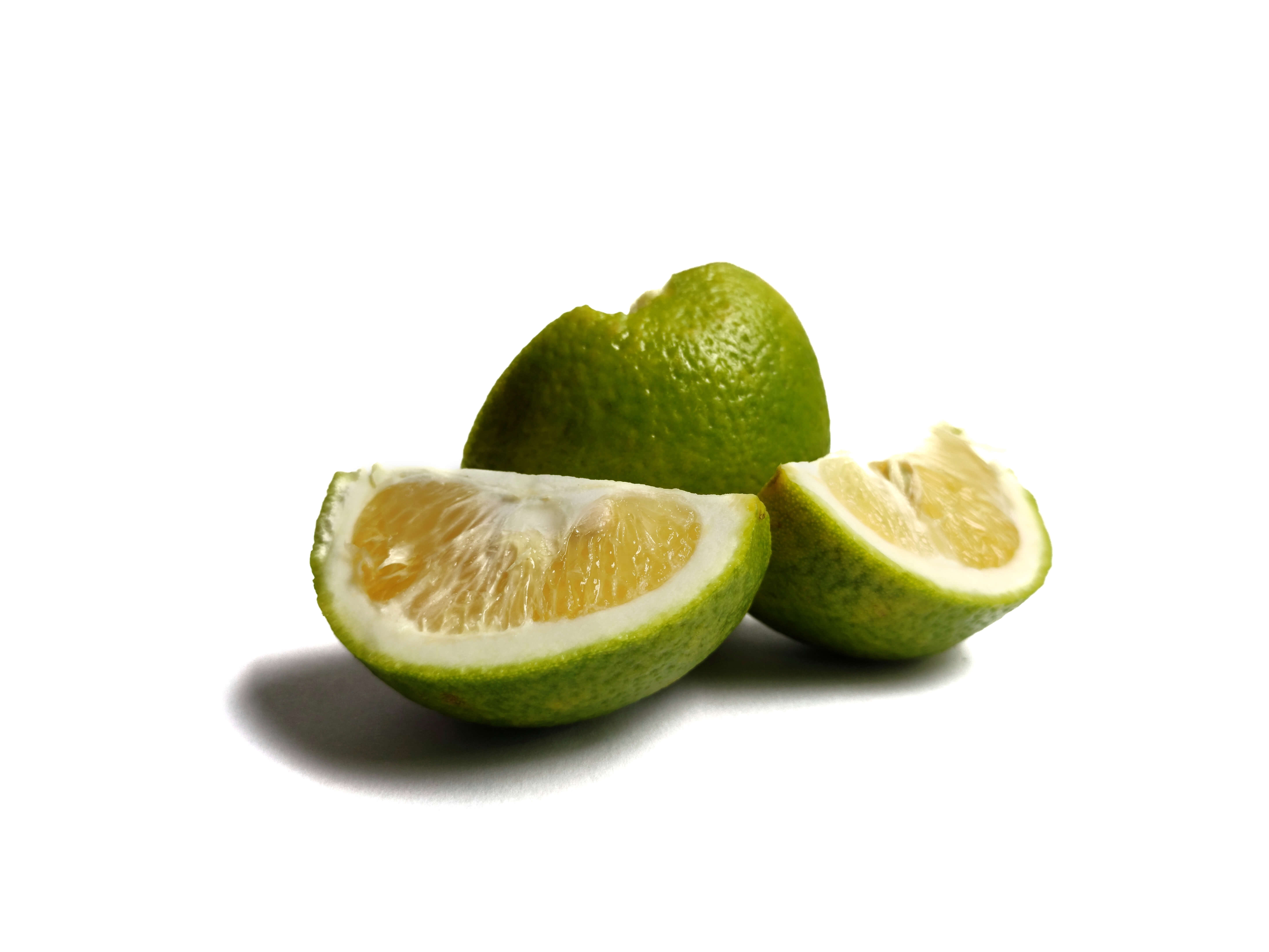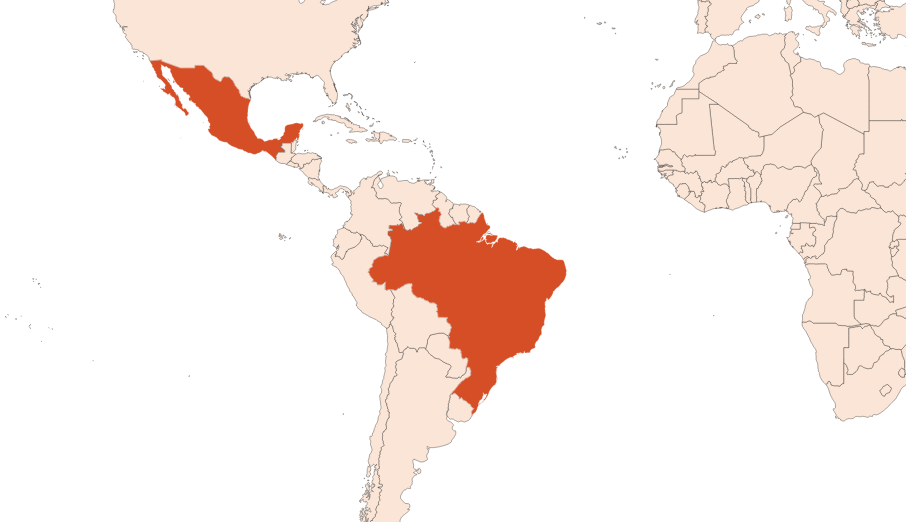Lime EO
Naturelle
Citrus > Zesty > Citric > Terpenic

Crédits photo: ScenTree SAS
Latin name :
Citrus aurantifolia
Botanical profile :
The lime is the fruit of the lime tree, belonging to the Rutaceae family and the Citrus genus.
Geographic origin :
Originally from South-East Asia, lime is now produced in Mexico (main producer), Peru, Argentina, South Africa and the West Indies
Chemotypes :
The genus Citrus includes the vast majority of citrus fruits and includes a large number of varieties available in perfumery:
Bergamot - (Citrus bergamia) is a hybrid of lemon and bitter orange, grown for the essential oil of its fruit and petitgrain.
Bitter orange or bigarade orange - (Citrus aurantium), grown in Spain and Florida.
Citron - (Citrus medica), grown in Italy (Sicily).
Lemon - (Citrus limon), cultured in Italy for the essential oil of its fruit and of its leafy twigs (Petitgrain).
Combava - (Citrus hystrix), grown in Thailand and India.
Lime - (Citrus aurantifolia), grown for its fruit in Mexico for the most part.
Mandarin - (Citrus reticulata), grown mainly in Italy for its fruit and for its petitgrain, by extracting the leaves from the tree. Its hybrid with sweet orange gave birth to clementine.
Orange - (Citrus sinensis) is famous for the cultivation of its fruits, whose juice and essential oil are extracted in Brazil and California in particular, which is the most used of all perfumes.
Grapefruit - (Citrus paradisii) of Malay origin, is cultivated for its essential oil in Brazil and Israel in particular.
Yuzu - (Citrus junos), produced in Japan and Korea.
Bergamot - (Citrus bergamia) is a hybrid of lemon and bitter orange, grown for the essential oil of its fruit and petitgrain.
Bitter orange or bigarade orange - (Citrus aurantium), grown in Spain and Florida.
Citron - (Citrus medica), grown in Italy (Sicily).
Lemon - (Citrus limon), cultured in Italy for the essential oil of its fruit and of its leafy twigs (Petitgrain).
Combava - (Citrus hystrix), grown in Thailand and India.
Lime - (Citrus aurantifolia), grown for its fruit in Mexico for the most part.
Mandarin - (Citrus reticulata), grown mainly in Italy for its fruit and for its petitgrain, by extracting the leaves from the tree. Its hybrid with sweet orange gave birth to clementine.
Orange - (Citrus sinensis) is famous for the cultivation of its fruits, whose juice and essential oil are extracted in Brazil and California in particular, which is the most used of all perfumes.
Grapefruit - (Citrus paradisii) of Malay origin, is cultivated for its essential oil in Brazil and Israel in particular.
Yuzu - (Citrus junos), produced in Japan and Korea.
Extraction process :
The lime tree can be up to 5 meters tall, with fruits up to 5 centimetres in diameter. Its cultivation extends from March to November and represents 1.5 to 2 million tons each year in Mexico. Fruit extraction can be done in two ways: by steam distillation or by cold expression. Often, the essential oil of Mexican lime results from the steam distillation of crushed zests. The fruit of the lime tree is harvested by hand and brought to the factory in crates. The fruits are sorted manually and washed.
As for other citrus fruits, they are sent in a peeling machine (pelatrice) to remove the zest. Zests are collected and steam distilled to obtain an essential oil that is greener, denser and with a more coumarin smell. In the case of a cold expression, citrus fruits are sent in a sfumatrice. Then, the oil and the zest debris are centrifuged with the water used for the process, to obtain the isolated essential oil.
The yield of an expression is between 0.1 and 0.15%.
The essential oil of lime can be subjected to a new distillation to remove certain terpenes or to isolate them, in addition to concentrate the more powerful compounds of the essential oil. A rectification of the oil can also be used to remove the furocoumarins (photosensitizers).
As for other citrus fruits, they are sent in a peeling machine (pelatrice) to remove the zest. Zests are collected and steam distilled to obtain an essential oil that is greener, denser and with a more coumarin smell. In the case of a cold expression, citrus fruits are sent in a sfumatrice. Then, the oil and the zest debris are centrifuged with the water used for the process, to obtain the isolated essential oil.
The yield of an expression is between 0.1 and 0.15%.
The essential oil of lime can be subjected to a new distillation to remove certain terpenes or to isolate them, in addition to concentrate the more powerful compounds of the essential oil. A rectification of the oil can also be used to remove the furocoumarins (photosensitizers).
Major Components :
D-Limonene (45-50%)
Gamma-Terpinene (≈8%)
Alpha-Terpineol (≈8%)
Citral (≈7%)
Terpinolene (≈6%)
para-Cymene (≈6%)
Gamma-Terpinene (≈8%)
Alpha-Terpineol (≈8%)
Citral (≈7%)
Terpinolene (≈6%)
para-Cymene (≈6%)
- Uses in perfumery :
- Modifier of citrus notes. Used for citrus notes in eaux fraîches perfumes, in consumer products and especially detergents.
- Other comments :
- Mexican lime, also known as lime key, is the most widely grown fruit in Mexico.
Citrus currently suffer from a disease called ''citrus greening ''. This disease is deadly for citrus fruits and no treatment exists. It is transmitted by a vector insect that attacks young shoots: the psylla. This results in the premature death of many trees and therefore the decline in the general production of the essential oil and its quality (reduction of the D-Limonene level). - Volatility :
- Head/Heart
- Appearance :
- Colorless liquid
- Stability :
- Solubility issues in perfumes
Citruses tend to fade through time in perfumes
Limonene tends to convert into Carvone through time, and to give a minthy note to the oil
The terpenes identified in this raw material can polymerize when they are oxidized - Price Range :
- €€
- Aromatherapy :
Informations provided below are taken from reference works in aromatherapy. They are given for information purposes only and can not constitute medical information, nor engage the responsibility of ScenTree.
Lime has sedative, anti-inflammatory and antispasmodic properties. It is recommended for inflammatory and spasmodic enterocolitis (inflammation of the bowel and colon) and cardiovascular problems.

Crédits photo: ScenTree SAS
- EINECS number :
- 290-010-3
- FEMA number :
- 2631
- Allergens :
- Citral - Linalool - D-Limonene
- IFRA :
- This ingredient is not restricted
To learn more about IFRA's standards : https://ifrafragrance.org/safe-use/library
ScenTree is solely responsible for the information provided here.


